ASUS: The EN7600 GS Silent, and EN7800 GT TOP Silent
by Josh Venning on May 12, 2006 11:00 AM EST- Posted in
- GPUs
Test Setup/Performance
Now that we've talked about the cards and their overclocking abilities, let's look at their performance. We've included a few other cards for comparison to get an idea of how these cards rank in a general way. Included on the graphs we have the NVIDIA 7800 GTX, 6600 GT, and the ATI X1800 GTO and X1600 XT (along with our two silent ASUS cards). The games we are testing are Half-Life 2: Lost Coast, Battlefield 2 and Quake 4, at 1280x1024 and 1600x1200 resolutions. Here is the test system we used:NVIDIA nForce 4 motherboard
AMD Athlon 64 FX-55 2.6 GHz Processor
1 GB OCZ 2:2:2:6 DDR400 RAM
Seagate 7200.7 120 GB Hard Drive
OCZ 600 W PowerStream Power Supply
*Note that sound was disabled for these tests.
Battlefield 2 Performance
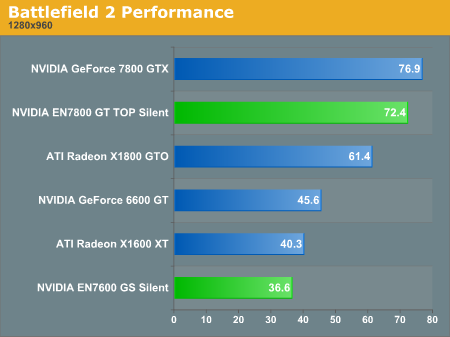
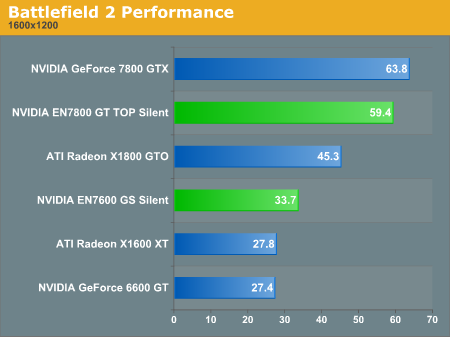
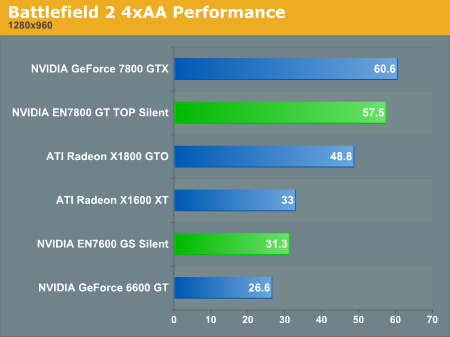
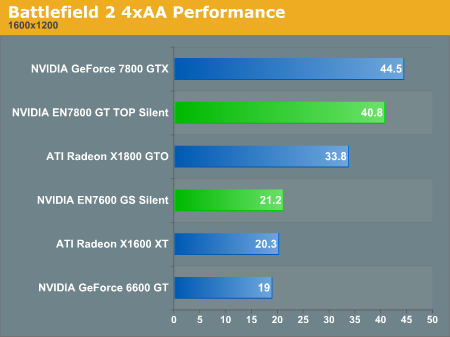
Halflife 2: Lost Coast Performance
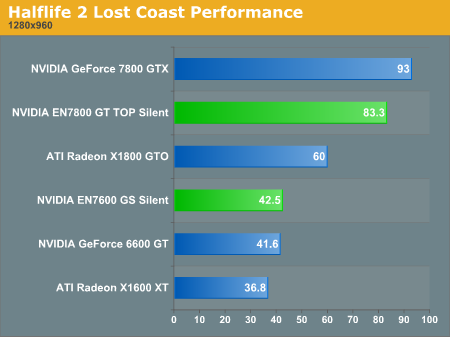
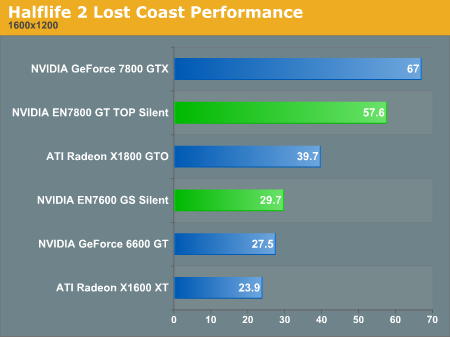

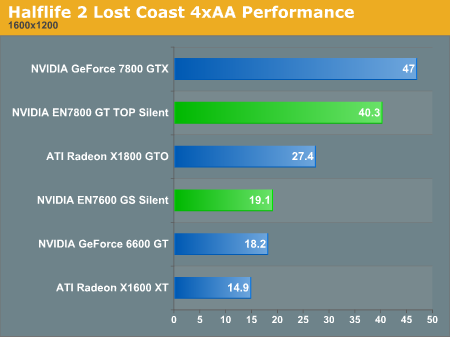
Quake 4 Performance
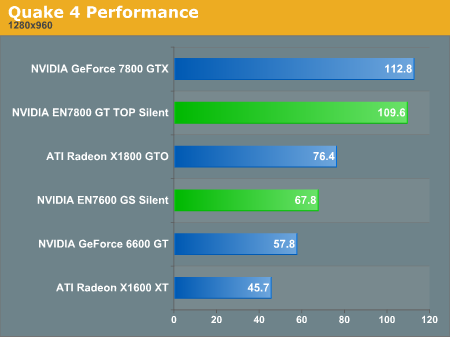
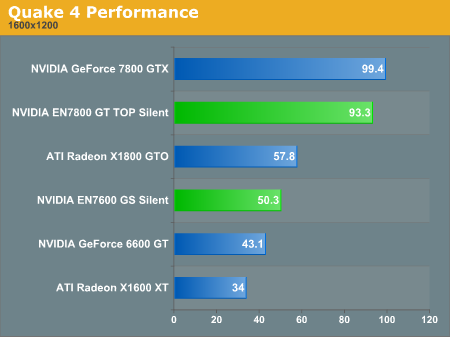
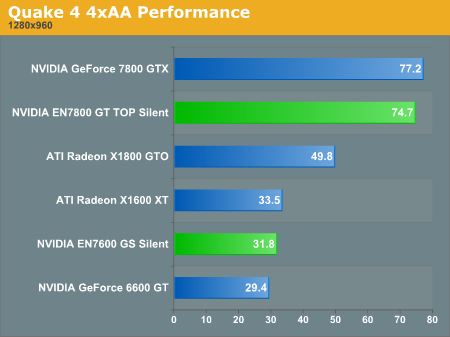
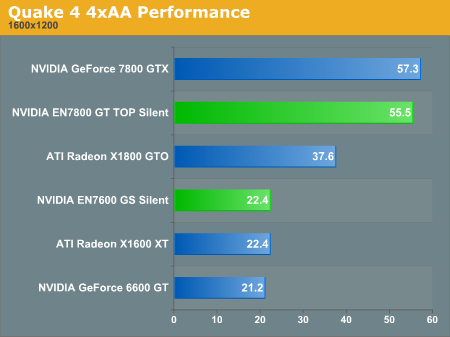
Of course these two silent cards are in a different league from each other in terms of performance. We mentioned that the EN7600 GS is more of a budget/mid range card and the EN7800 GT TOP Silent more on the high-end. The numbers here reflect this, and we can see that the 7600 GS has a little trouble running games very smoothly with high resolutions, particularly with Anti-aliasing enabled. It still does very well and (arguably) gets playable framerates in almost all of the games and settings.










39 Comments
View All Comments
Josh Venning - Saturday, May 13, 2006 - link
Thanks Jarred.Yes the Splinter Cell graphs were wrong for most of the EN7600 GS Silent results. I went back and changed them so the graphs are now accurate. Sorry for the confusion here.
poohbear - Friday, May 12, 2006 - link
lol wow jared u actually answered the jerk's post in a professional manner. some teenager rants and raves in the manner befitting a 15 year old, and u answer him like he's an adult. gj mate.Griswold - Friday, May 12, 2006 - link
Asus needs to bring us a 7900GT with that cooling solution. It should be much better than the 7800 in terms of heat output.nullpointerus - Friday, May 12, 2006 - link
It would be better to get a 7900GT ($290) and an Accelero X1 ($35). There is almost no discernable difference between silent and nearly silent, but the thermal difference is going to be HUGE. A large (i.e. 120mm) fan will thoroughly trounce the stock coolers while producing next to zero noise. Why pay $400 for a passively cooled 7800GT?nullpointerus - Friday, May 12, 2006 - link
Oops, slight error. The Accelero series won't have a 7900GT-compatible model until June, so you'd have to use a 7800GT instead.yacoub - Friday, May 12, 2006 - link
Friggin' 7800GT TOP-SILENT came out a year ago. Time for a 7900GT TOP-SILENT already, WTF!! >:[Griswold - Friday, May 12, 2006 - link
Not quite. It first popped up on Asus' website in november or december of last year.yacoub - Monday, May 15, 2006 - link
way to miss the point: IT'S OLD. IT'S LAST-GEN HARDWARE. oh and IT RUNS WAY TOO HOT.BurntKooshie - Friday, May 12, 2006 - link
If I understand the article correctly, this means the CPU fan is drawing in hotter air (because the air has pass over the extended heatsink). If correct, why didn't you test to see the effect of the newly obstructed and hotter airflow upon CPU temperature?rowcroft - Friday, May 12, 2006 - link
I've been looking at an SLI setup for 4 DVI ports, would the GT TOP work in SLI? I'd be concerned about where the second rotating heatsink would go.